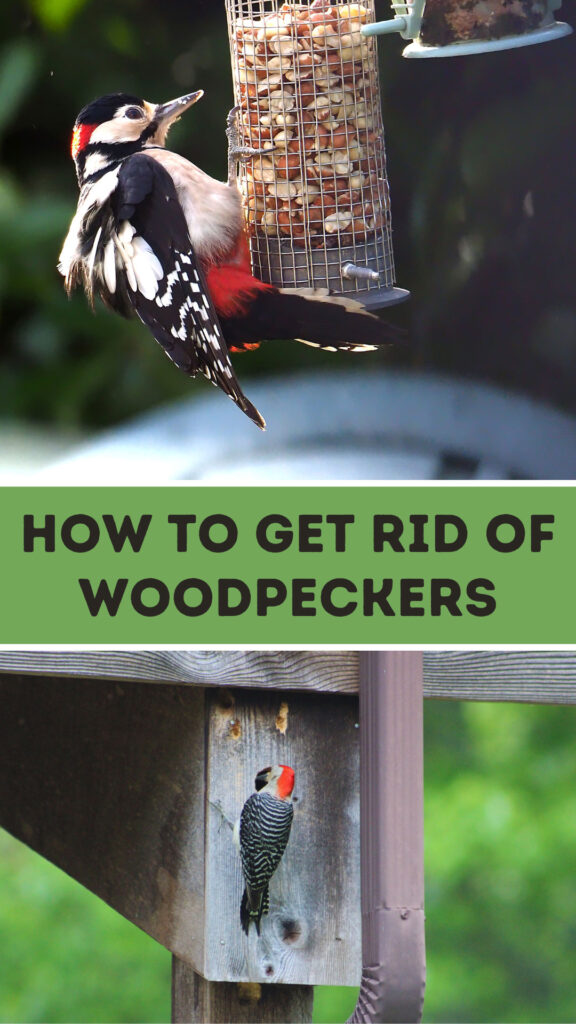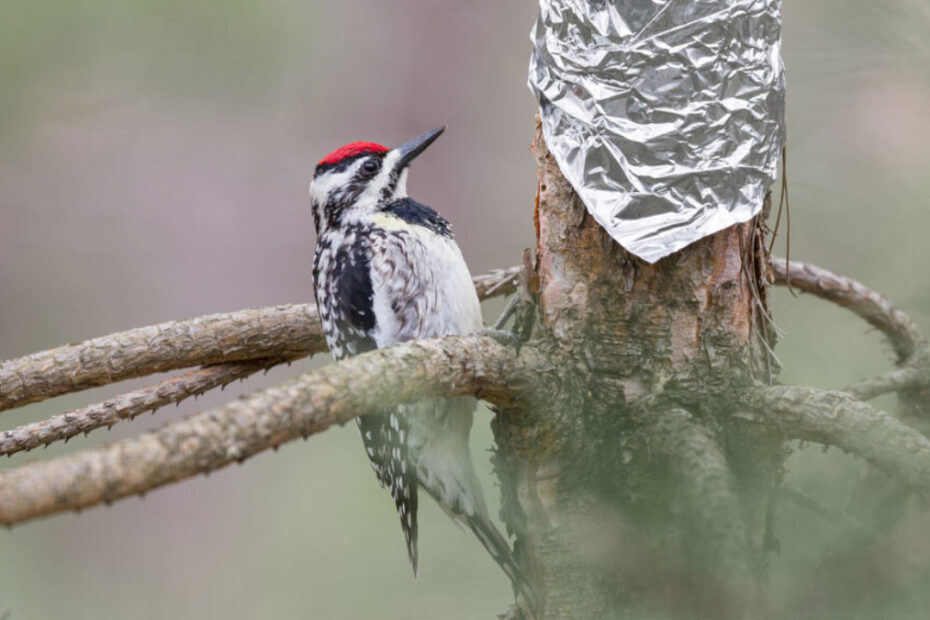Woodpeckers can be a real nuisance when they decide your home is their new favorite drumming spot. Their persistent pecking not only disturbs your peace but can also cause significant damage to your property. If you’re tired of the relentless tapping and the unsightly holes, it’s time to take action.
Understanding why woodpeckers are attracted to your home is the first step in finding an effective solution. Whether they’re searching for food, creating nesting sites, or just marking their territory, knowing their motives will help you choose the best strategy to keep them away. Let’s explore some proven methods to rid your property of these pesky birds and restore tranquility to your surroundings.
Key Takeaways
- Understand Woodpecker Behavior: Knowing why woodpeckers are attracted to your home, such as for feeding, nesting, or marking territory, helps implement effective deterrents.
- Identify Common Species: Recognize various species like Downy, Hairy, Northern Flicker, and Pileated Woodpeckers to tailor your prevention strategies.
- Remove Attractants: Eliminate food sources, seal nesting sites, and replace resonant materials to make your property less appealing to woodpeckers.
- Use Decoys and Deterrents: Employ lifelike owl decoys, reflective objects, and sound emitters strategically to scare woodpeckers away.
- Install Physical Barriers: Protect vulnerable areas with bird netting, wire mesh, and woodpecker-resistant siding materials.
- Consider Professional Help: Seek expert assistance for persistent issues, protected species, or challenging access points to ensure comprehensive and regulatory-compliant solutions.

Understanding Woodpeckers
Getting rid of woodpeckers begins with understanding them. Understanding why they behave the way they do helps you carry out effective deterrence strategies.
Common Types of Woodpeckers
Several species of woodpeckers are common in residential areas:
-
Downy Woodpecker
- Small, black-and-white bird.
- Commonly found in North America.
- Likes deciduous forests, orchards, and suburban areas.
-
Hairy Woodpecker
- Larger than the Downy.
- Prefers wooded areas with mature trees.
- Often found in parks and backyards.
-
Northern Flicker
- Medium-sized with brownish plumage.
- Distinctive red or yellow shafts on their wings.
- Common in open forests and wooded suburban areas.
-
Pileated Woodpecker
- Large, crow-sized bird.
- Mostly black with a striking red crest.
- Inhabits large, deciduous forests and sometimes ventures into residential areas.
Why Woodpeckers Peck
Woodpeckers peck for various essential reasons:
-
Foraging for Food
- Woodpeckers peck at wood to extract insects, their primary food source.
- They may also forage for sap and nuts.
-
Nesting
- Creating cavities in trees or wooden structures serves as nesting sites.
- These nests provide shelter and breeding grounds.
-
Marking Territory
- Drumming or pecking helps establish their territory.
- This behavior can attract mates and deter rivals.
- Pecking patterns signal presence to other woodpeckers.
- Often used as a non-vocal communication method.
Understanding these behaviors lets you take targeted actions, such as installing deterrents or eliminating food sources, to mitigate the impact of woodpeckers on your property.
Preventative Measures
Implementing preventative measures can effectively reduce the chances of woodpeckers damaging your property. Ensure your home and surrounding area are unattractive to these birds by addressing specific elements.
Removing Attractants
Understand that woodpeckers are attracted to certain features of your home. Identify and remove these attractants:
- Food Sources: Eliminate any exposed wood-boring insects by using appropriate insecticides. Frequently perform pest control to prevent infestations.
- Nesting Sites: Seal any existing cavities or potential nesting sites with caulk or wood putty.
- Resonant Surfaces: Replace resonant siding materials such as cedar and redwood with non-resonant alternatives like stucco or vinyl.
Using Decoys and Deterrents
Decoys and deterrents can be effective in keeping woodpeckers at bay. Place these items strategically to discourage them from approaching:
- Owl Decoys: Position lifelike owl decoys on ledges or roofs. Move them periodically to maintain their effectiveness.
- Reflective Objects: Hang strips of aluminum foil, pie tins, or reflective tape. The light reflections and movement can scare woodpeckers away.
- Sound Emitters: Install sound devices that emit bird distress calls or predator noises.
Physical Barriers
Physical barriers can protect vulnerable areas of your home. Install these barriers to prevent woodpeckers from accessing desired drumming spots:
- Netting: Use bird netting over affected areas to create a physical barrier. Ensure it is taut and at least 3 inches away from the surface.
- Mesh: Attach wire mesh or hardware cloth over wood surfaces. This prevents woodpeckers from reaching the wood.
- Woodpecker-Safe Siding: Consider using siding materials that are not easily drilled, such as Hardie board or metal.
By implementing these preventative measures, you can significantly reduce the chances of woodpeckers causing damage to your property.
Repellent Solutions
Woodpeckers can be persistent, but various repellent solutions can help deter them. Using both natural and chemical repellents can provide effective protection for your home.
Natural Repellents
Natural repellents offer eco-friendly solutions to deter woodpeckers without harming them.
- Predator Decoys: Installing decoys like owl or hawk statues can create the illusion of predators, scaring woodpeckers away.
- Reflective Objects: Hanging shiny objects (e.g., aluminum foil, reflective tape) can disorient woodpeckers, making them less likely to peck.
- Sound Machines: Devices emitting predator sounds or distress calls can help keep woodpeckers at bay.
- Spicy Solutions: Spraying capsicum-based solutions on affected areas can discourage woodpeckers without causing harm.
Chemical Repellents
Chemical repellents can be an effective solution but should be applied with caution.
- Sticky Repellents: Applying sticky substances to target areas can make surfaces unpleasant for woodpeckers. Ensure these products are non-toxic and labeled for use against birds.
- Taste Aversions: Using liquid sprays that create an unpleasant taste when woodpeckers peck can prevent repeated damage.
- Scent-Based Repellents: Certain scents, like mothballs or commercial bird repellent scents, can deter woodpeckers without posing long-term harm.
Combining these methods increases effectiveness. Always follow product directions and consider any local wildlife regulations to ensure safe use.
Professional Help
Sometimes, woodpecker problems require more than just DIY solutions. In such cases, seeking professional help becomes necessary.
When to Call a Professional
Consider contacting a professional if:
- Persistent Damage: Woodpeckers cause ongoing damage even though DIY prevention attempts.
- Protected Species: You suspect the woodpecker belongs to a protected species, requiring special handling.
- Complex Access: The nesting or affected area is hard to reach or presents safety risks.
- Regulatory Issues: Your local area has specific wildlife regulations that must be adhered to.
What to Expect from Professional Services
Professional services include several key activities:
- Inspection and Assessment: Experts will inspect the property, assess the damage, and identify woodpecker species.
- Customized Plan: Based on the assessment, professionals provide a detailed prevention and mitigation plan.
- Implementation: The plan may involve installing deterrents, sealing entry points, or setting up barriers.
- Regulatory Compliance: Ensuring all methods comply with local wildlife laws and regulations.
- Education and Advice: Professionals offer tips and guidance to prevent future woodpecker problems.
Professionals can offer a more in-depth approach, utilizing specialized knowledge and tools, ensuring long-term solutions.
Conclusion
By understanding why woodpeckers target your home and implementing the right strategies, you can effectively deter these persistent birds. Combining preventative measures, natural and chemical repellents, and physical barriers can help protect your property. If DIY methods fall short, don’t hesitate to seek professional assistance for a comprehensive solution. With these insights and actions, you’ll be well-equipped to restore peace and safeguard your home from woodpecker damage.
Frequently Asked Questions
Why do woodpeckers peck on homes?
Woodpeckers peck on homes primarily for three reasons: searching for food, creating nesting sites, and marking territory. Understanding these reasons helps homeowners implement effective deterrence strategies.
What types of woodpeckers are commonly found in residential areas?
Common woodpeckers in residential areas include the Downy Woodpecker, Hairy Woodpecker, Northern Flicker, and Pileated Woodpecker.
How can I prevent woodpeckers from damaging my property?
Prevent woodpecker damage by removing food sources, nesting sites, and resonant surfaces. Use decoys like owl figures and reflective objects, or install physical barriers like bird netting and wire mesh.
What natural repellents can I use to deter woodpeckers?
Natural repellents include predator decoys, reflective objects, sound machines, and spicy solutions. These eco-friendly methods can effectively keep woodpeckers away.
Are chemical repellents effective against woodpeckers?
Chemical repellents, such as sticky substances, taste aversions, and scent-based repellents, can be effective. However, they should be used cautiously to avoid harming the birds.
When should I call a professional for woodpecker problems?
Call a professional if you experience persistent damage despite DIY efforts, concerns about protected species, difficult access to affected areas, or local regulatory issues.
What can I expect from professional woodpecker control services?
Professional services include a property inspection, customized prevention plans, implementation of deterrents, regulatory compliance, and educational advice to ensure long-term solutions.
